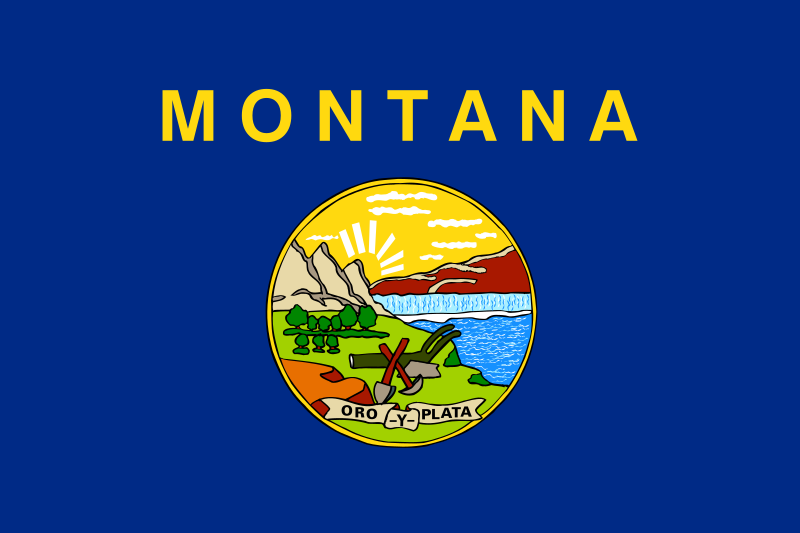The Montana legislature passed two bills which would modify the rulemaking process for state administrative agencies. Both were supported by bipartisan majorities.
House Bill 126 was passed by a vote of 100-0 in the House on January 29, 2025; the Senate voted 48-0 on April 9, 2025. Gov. Gov. Greg Gianforte (R) signed it on May 1, 2025. House Bill 592 was passed by a vote of 99-0 on April 17, 2025; the Senate voted 47-2 on April 9, 2025. The bill was awaiting signature by Gov. Greg Gianforte (R) as of May 13, 2025.
What’s the story?
Both House Bill 126 and House Bill 592 require agencies to contact the primary sponsor of a law when proposing rules to implement the law. If the sponsor’s input is not used, the agency is mandated to explain its reasons in writing. Both HB 126 and HB 592 also require agencies to provide online comment opportunities, expand other avenues for public comment, and require agencies to address any objections by the legislature’s administrative rule review committee, among other provisions.
Only HB 592 requires a small business impact statement to help legislators evaluate specific positive and/or negative impacts of the proposed rule on affected small businesses. A statement must identify the small businesses affected by the rule and state the probable significant effects of the proposed rule on those businesses.
Bill sponsor Rep. Courtenay Sprunger (R) said, “This bill ensures that the individuals elected to represent Montanans remain in the driver’s seat when it comes to shaping the laws that impact businesses, workers, and families.”Americans for Prosperity said, “This bill brings greater transparency and accountability to Montana’s regulatory process…This bill ensures that the regulatory process remains transparent, accountable, and responsive to lawmakers and the public alike.”
Opponents of bills aiming to require legislative oversight of rulemaking contend that such laws “hinder the efficiency of regulatory agencies, delay necessary regulations, and undermine agencies’ expertise.” In Montana, Citizen Portal AI reported that critics of HB 529“…express concerns that the added bureaucratic requirements could slow down the rule-making process and create hurdles for necessary regulations.”
Why does it matter?
The sponsor of HB 592 cites the federal bill known as the REINS Act, for inspiring the legislation. The REINS Act seeks to give Congress preemptive authority to halt enactment of certain regulations which have financial impacts on the U.S. economy of $100 million or more annually, increase consumer prices, or have significant harmful effects on the economy. It would also require Congress to examine all existing regulations that have financial impacts on the U.S. economy of $100 million or more. A Federal REINS Bill passed the U.S. House of Representatives by a vote of 221-210 on June 14, 2023; and was reintroduced in 2024 and 2025.
HB 592 and HB 126 do not specify certain financial or economic impacts as a trigger for legislative review, a defining feature of REINS-style state laws. These laws also include legislative action before a rule can take effect, such as review by a legislatively controlled body or approval through a resolution or statute.
Americans for Prosperity-Montana described HB 592 as “laying the groundwork for a future REINS Act.”
What’s the background?
Montana is a Republican trifecta state, where one party controls the governorship and holds majorities in both legislative chambers.
Montana Secretary of State Christi Jacobsen (R) announced significant changes to administrative rulemaking in a Jan. 14 memo. The changes did not address oversight; they revised the rulemaking notice format, added a red tape portal to identify potentially burdensome new rules, and expanded opportunities for public feedback.
Kentucky, South Dakota, and Utah enacted REINS-style state laws in 2025. Wyoming also enacted a law adding mechanisms for legislative oversight of agency rulemaking.
Ballotpedia tracks legislation on the administrative state, including legislation concerning the power balance between each branch of government and executive agencies. Nine state legislatures took action on 15 bills with provisions related to legislative control and oversight of agency actions as of May 13th. Ballotpedia tracked 301 bills related to legislative control and oversight so far in 2025. Legislative control is one of five pillars Ballotpedia uses to understand and explain policies related to the administrative state. It focuses on the balance of power between administrative agencies and the legislative branch.
Additional reading:


